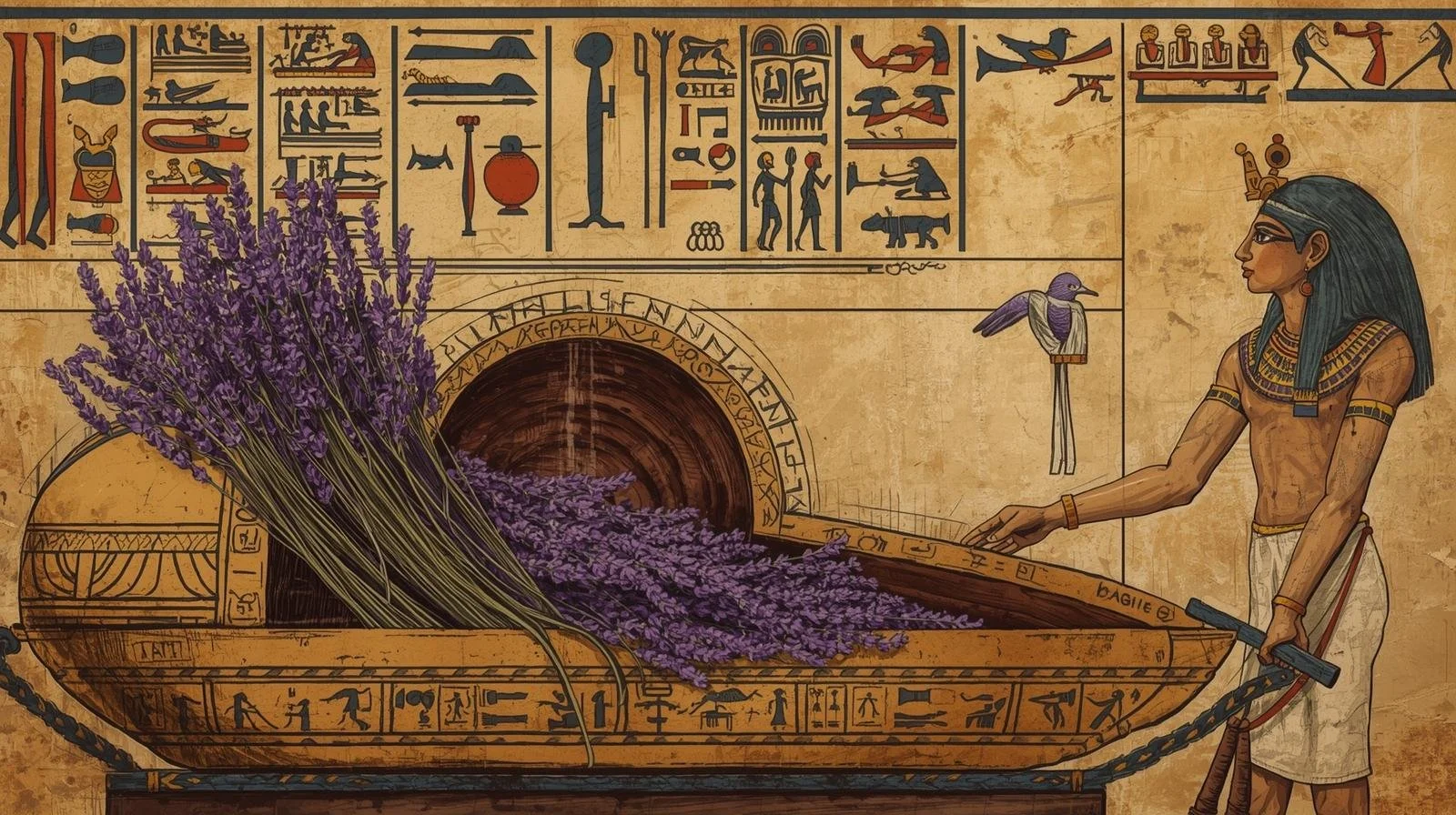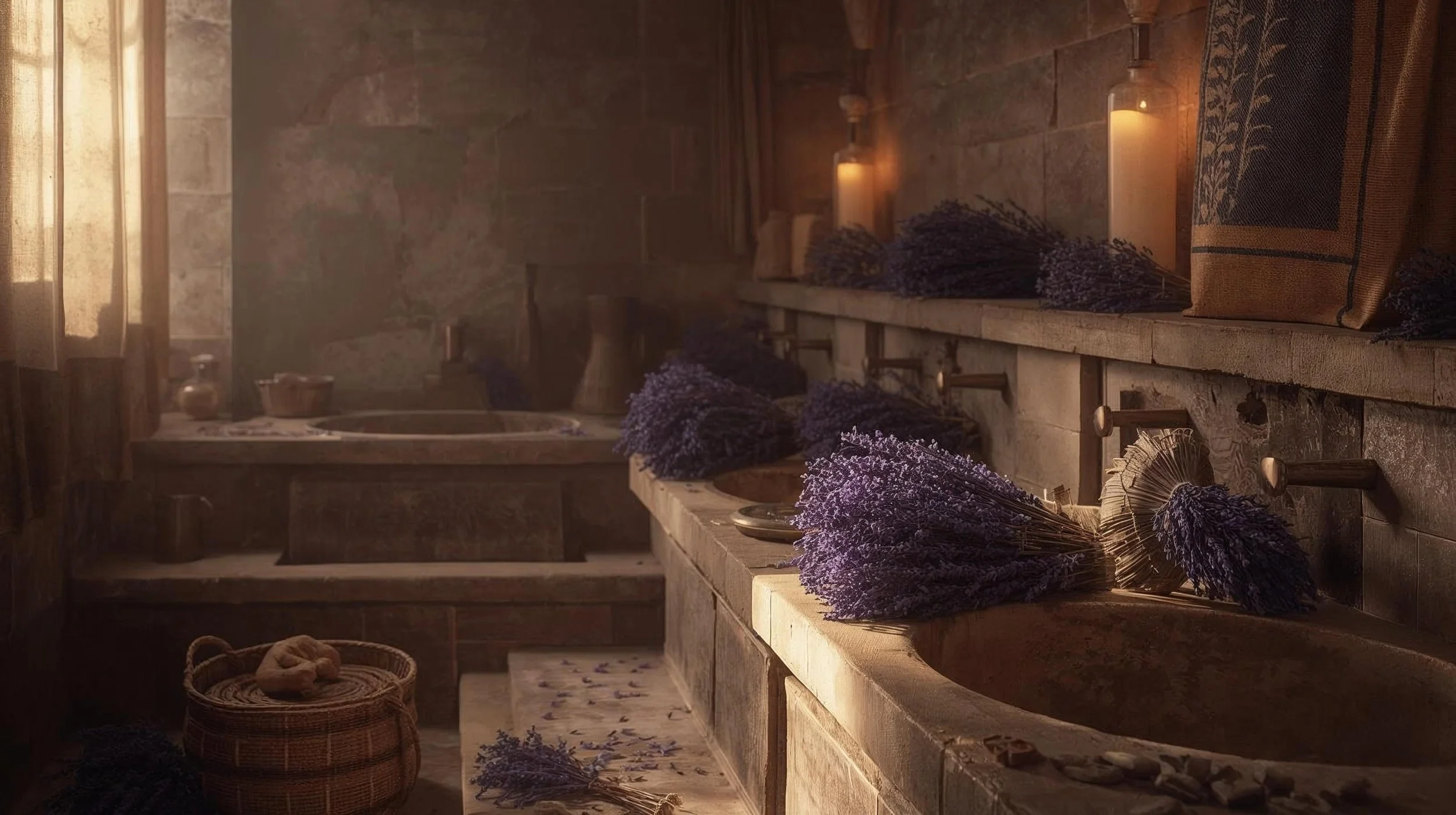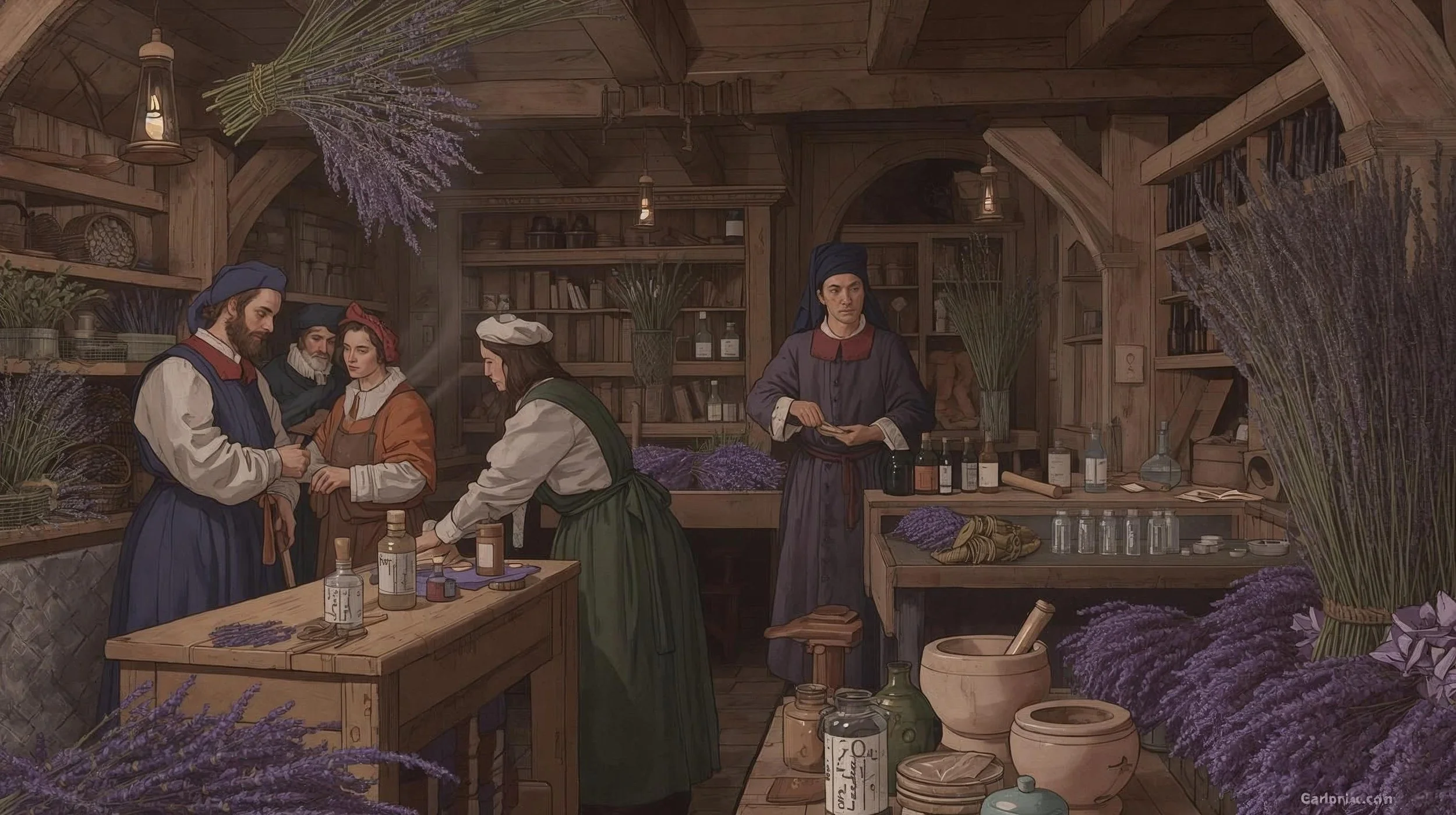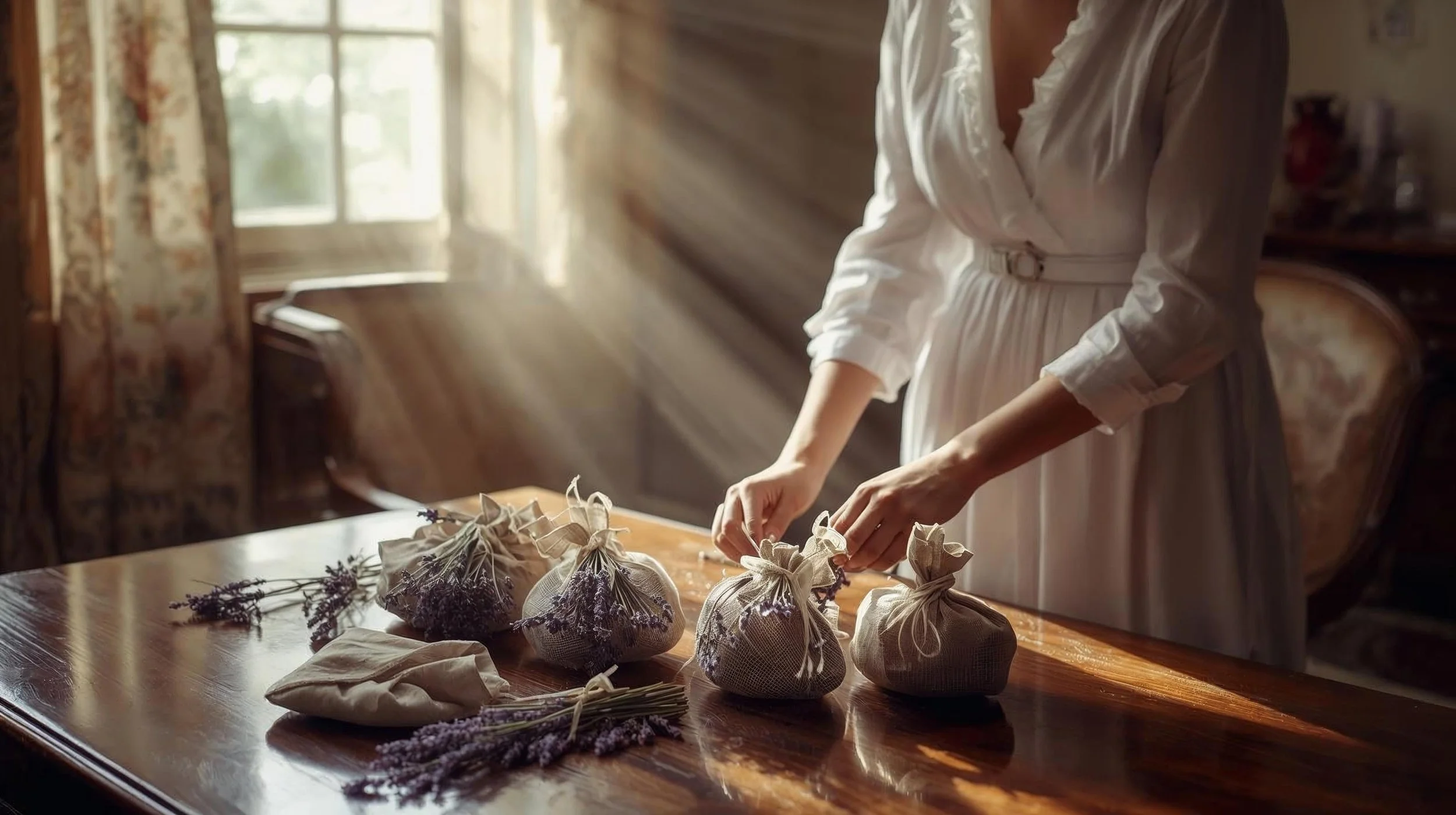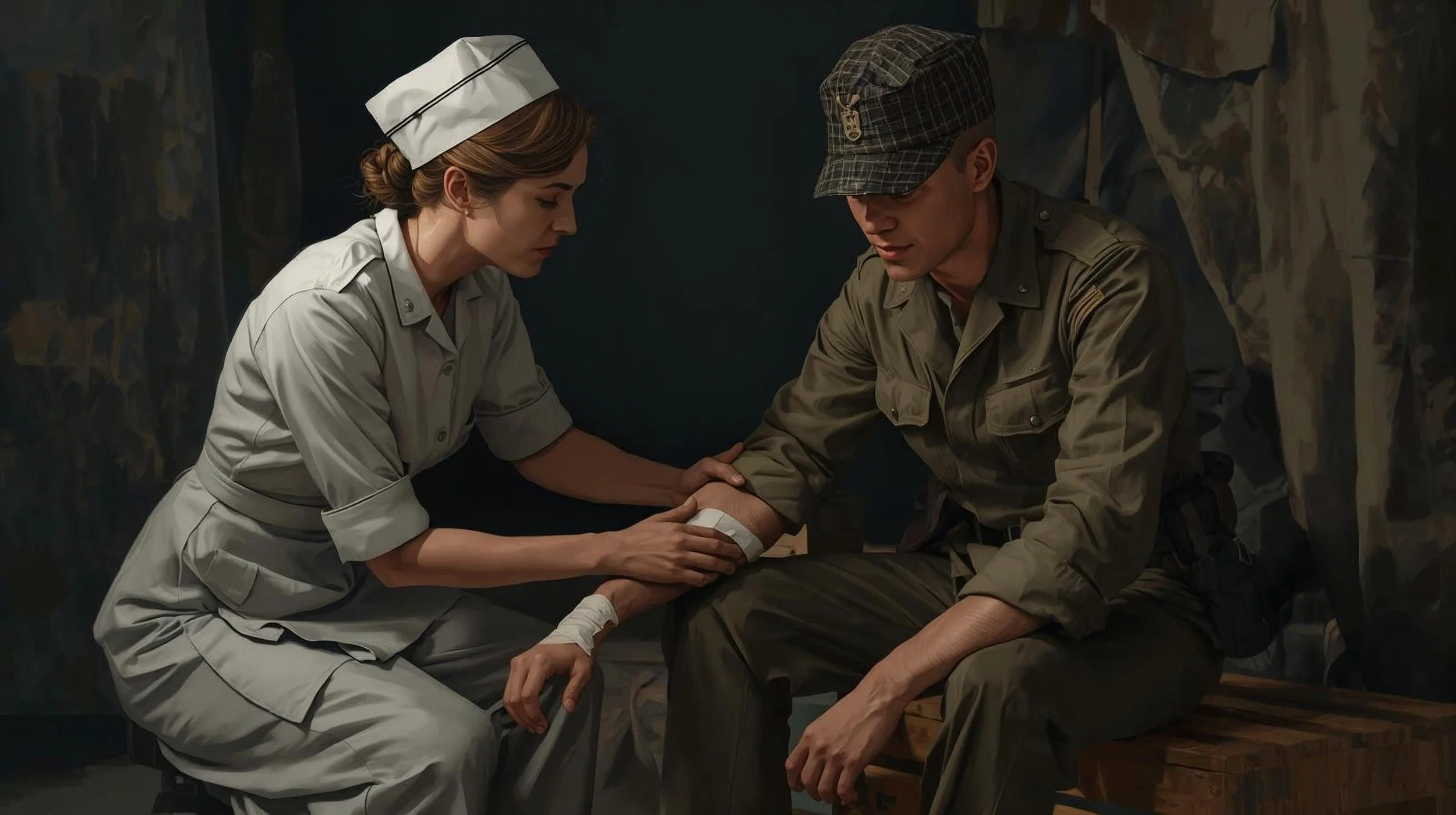The Legacy of Lavender
Across centuries, from Roman baths to Victorian linen closets, people have turned to lavender for comfort, calm, and healing. So when we use it today, we’re part of a long tradition of caring for body and mind through plants.
Ancient Egypt
Ancient Egypt: 1330 BCE
In ancient Egypt, lavender was used in mummification and temple offerings, valued for its fragrance and purifying properties. Archaeologists have discovered traces of lavender in King Tutankhamun’s tomb, over 3,000 years old, suggesting it was used both for its soothing scent and its role in preservation rituals.
Ancient Greece & Rome
Ancient Greece & Rome: 1st–4th centuries AD
In ancient Greece and Rome, lavender was valued for its healing and cleansing properties. Greek physicians like Dioscorides, writing in the 1st century AD, described “nardus” (lavender) as a remedy for insomnia and digestive troubles. The Romans embraced the plant’s soothing qualities, using it in baths, laundry, and perfumes—its name derived from the Latin lavare, meaning “to wash.” Roman soldiers even carried lavender with them to clean wounds and promote healing on the battlefield.
Medieval Europe
Medieval Europe: 500 AD to 1500 AD
In medieval Europe, lavender was cherished as a herb of cleanliness and protection. People hung fragrant bundles in their homes to ward off “bad air,” which was believed to spread illness. During the time of the Black Plague in the 14th century, perfumers and apothecaries used lavender as a disinfectant and to mask unpleasant odors. Monks and nuns also cultivated lavender in monastery gardens, where it was used to prepare soothing salves and healing teas.
Victorian Era
Victorian Era: 18th Century
During the Victorian Era, lavender became a cherished household staple, prized for its soothing fragrance and practical uses in linen sachets, perfumes, and cleaning solutions. It was closely associated with purity, calm, and domestic refinement. Queen Victoria herself reportedly adored lavender, promoting its presence throughout the royal household and helping to cement its reputation as a symbol of elegance and tranquility in Victorian homes.
World War I & II
World Wars: Early 20th Century
During World War I and World War II, lavender oil played a role on the battlefield and at home, especially when medical supplies were limited. It was commonly used to disinfect wounds and soothe burns, offering a natural remedy that helped prevent infection and ease pain. Its practical uses during these challenging times highlighted lavender’s enduring reputation as both a healing and calming plant.
Modern Day
Modern Day: 21st Century
Today, lavender remains one of the most studied and used essential oils for stress relief, sleep, and anxiety reduction.
References:
Batiha GE-S, Teibo JO, Wasef L, et al. A review of the bioactive components and pharmacological properties of Lavandula species. Naunyn-Schmiedeberg’s Archives of Pharmacology. 2023;396(5):877-900. doi:10.1007/s00210-023-02392-x
Davis DrJ. Lavender: History, taxonomy, and production. NC State Extension News. Accessed November 10, 2025. https://newcropsorganics.ces.ncsu.edu/herb/lavender-history-taxonomy-and-production/.
Koulivand PH, Khaleghi Ghadiri M, Gorji A. Lavender and the nervous system. Evidence-Based Complementary and Alternative Medicine. 2013;2013:1-10. doi:10.1155/2013/681304
Samuelson R, Lobl M, Higgins S, Clarey D, Wysong A. The effects of lavender essential oil on wound healing: A review of the current evidence. The Journal of Alternative and Complementary Medicine. 2020;26(8):680-690. doi:10.1089/acm.2019.0286

